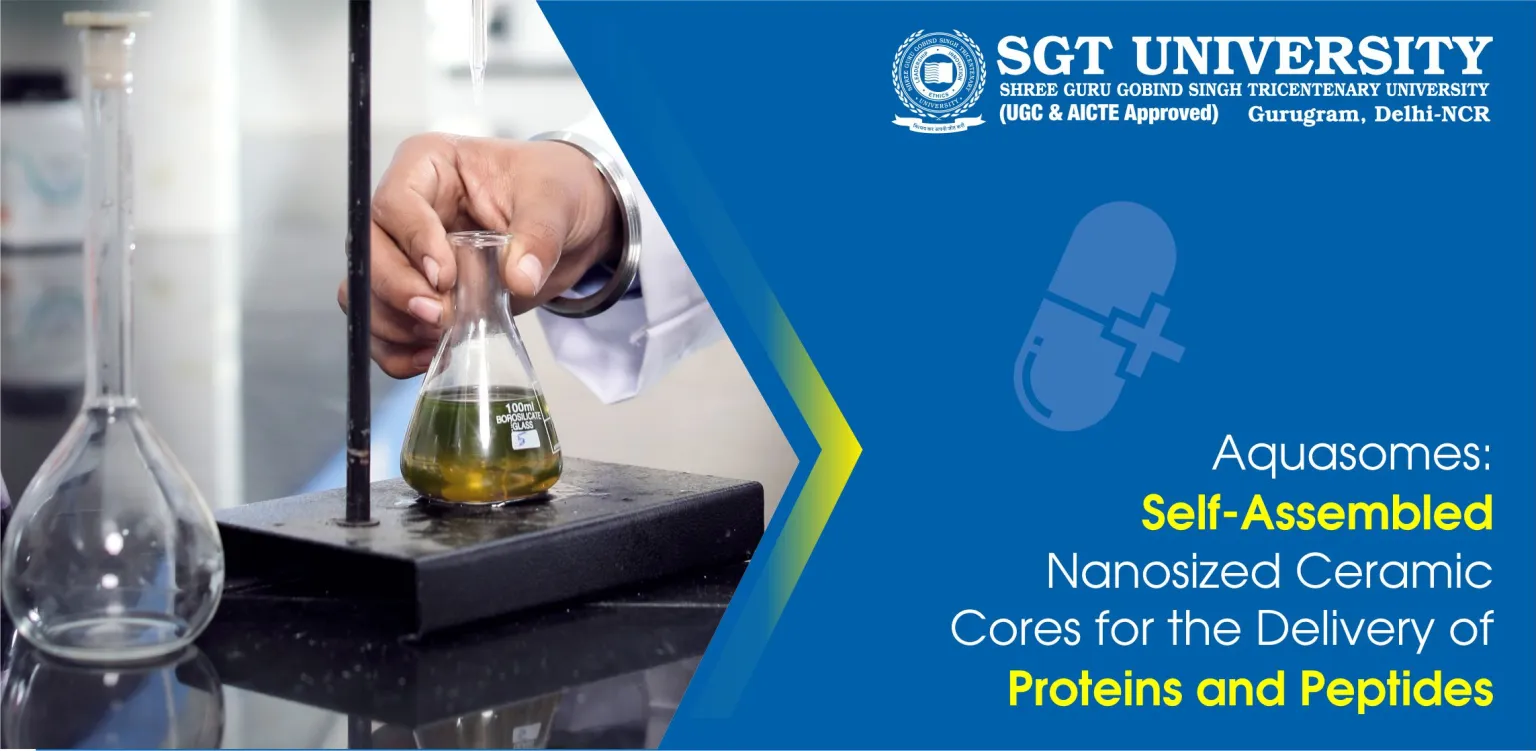Proteins and peptides of therapeutics use have emerged as a new class of pharmaceutics, for clinical application since the introduction of recombinant human insulin. Various proteins and peptides have been successfully used for the treatment of a broad range of diseases e.g. thyroid hormone in hypothyroidism and factor VIII for hemophilia whiles many more are still under clinical trials. Depending upon thein-vitro dissolution and in-vivo absorption behavior, proteins and peptides have been placed under Biopharmaceutical Classification System (BCS) – Class III. They exhibit good solubility in aqueous or buffered media but have log P values less than zero. The permeability through intestinal mucosa is, therefore, low. This leads to a poor and inconsistent absorption of these drugs when administered through the oral route.
Numerous proteins or peptides with significant therapeutic efficacy are unable to express their absolute benefits when administered parenterally due to insufficient exposure/duration of their biological activity. Moreover, even a minor alteration in the secondary and tertiary structures of protein molecules can lead to the degradation of proteins. The denaturation of protein is effortlessly persuaded by a change in pH, a rise in temperature of the system, agitation, freezing, and exposure to interfaces. Therefore, formulation development for protein and peptide molecules is significantly more difficult than that of conventional drugs. This is complicated by the fact that the molecular sizes of proteins are much larger as compared to those of the traditional pharmaceuticals. Thus, a new delivery system that would retain the efficiency of the systemic delivery of these agents is required that could deliver the drugs at a controlled rate with prolonged biological activity. The mingling of nanotechnology and biotechnology offered a novel approach as a way-out to their formulation related problems and incarnated; aquasomes.
Aquasomes are three-layered (i.e., core, coating, and drug) self-assembled nano-particulate delivery systems composed of a nanocrystalline core (solid phase) coated with an oligomeric film which is assimilated with active moiety (Figure 1), with or without modification. All three events – self-aggregation of ceramic center (core), coating with oligomers, and loading of drugs are accomplished through non-covalent bonds and Van der walls forces. The surface of the ceramic core is non-covalently modified with carbohydrates, eg; cellulose, sucrose, trehalose, and provides structural stability to a largely immutable solid.
The unique property of maintaining conformational integrity and a high degree of surface exposure can be exploited for targeted delivery of therapeutic biomolecules like – peptide and protein hormone, antigens, and enzymes. The modification of the surface of the ceramic core by deposition of carbohydrates creates a glassy molecular stabilized film that easily adsorbs a good amount of therapeutic proteins with minimal structural denaturation. As a result, it provides complete protection of aqueous characteristics to the adsorbed molecules against the degradative effects of pH and temperature. Since no change in swelling or porosity takes place with the change in pH or temperature.
Aquasomes may bring a new revolution in the field of protein and peptide delivery by bearing immense potential and capability of preserving the structural integrity of protein pharmaceuticals. In addition, these formulations can be used as immuno-adjuvants for proteinaceous antigens as they have been reported to evoke a better immunological response. In addition to that, exhaustive studies on aquasomes are required to establish pharmacokinetics, toxicology, and stability aspects to validate the desirable regulatory parameters in order to set up their clinical adequacy and commercial potential.
Dr. Vijay Sharma
Professor
Department of Pharmaceutics
SGT College of Pharmacy
SGT University Gurgaon


